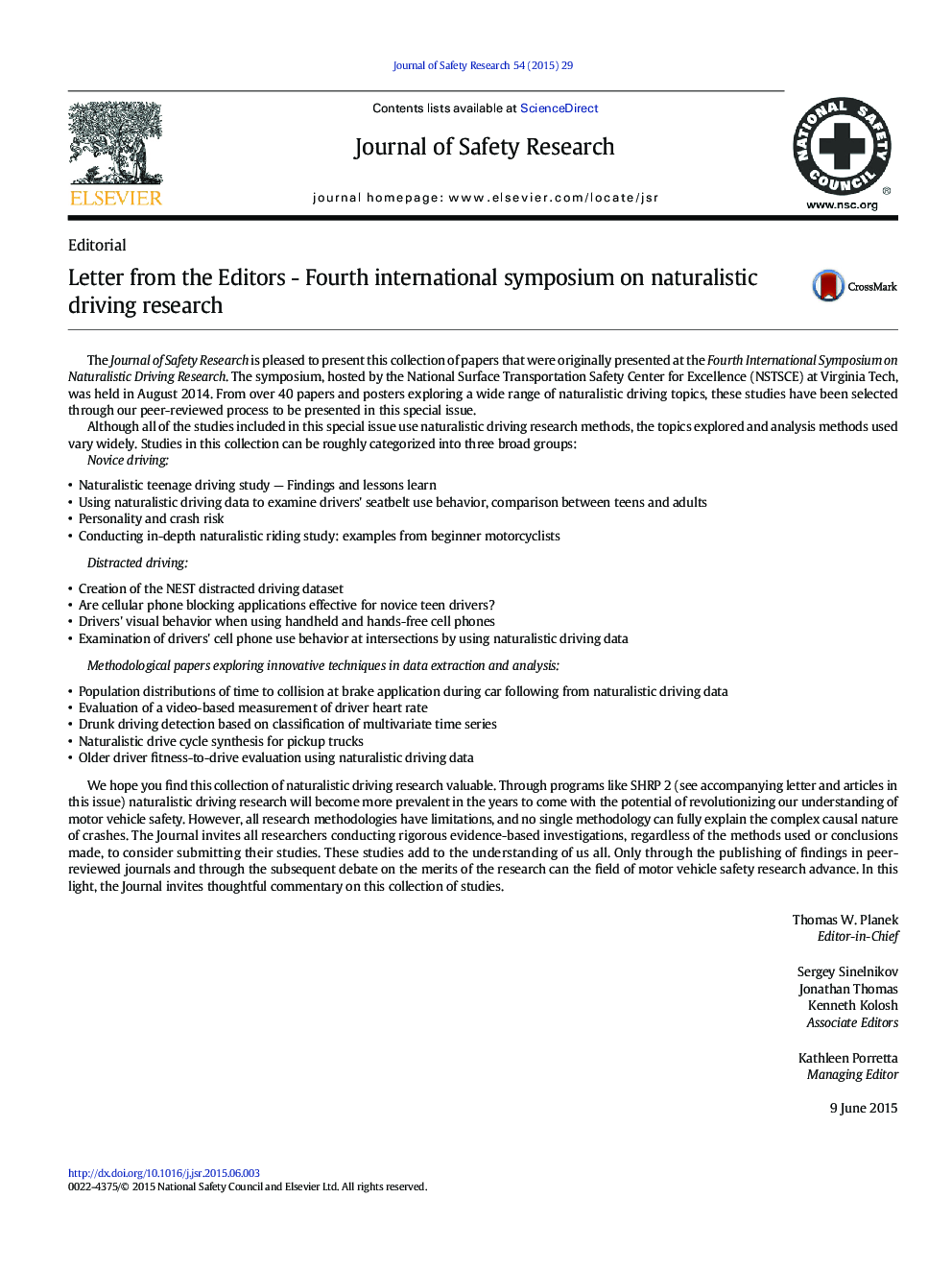| Article ID | Journal | Published Year | Pages | File Type |
|---|---|---|---|---|
| 587292 | Journal of Safety Research | 2015 | 45 Pages |
•Naturalistic driving study provides a promising method to study driver behavior on the real roads.•Novice teen drivers who just received their driver license are the most conservative seatbelt users.•Young drivers are the least conservative seatbelt users.•Female drivers have a higher seatbelt use rate and tend to buckle up at the beginning a trip, when compared to male drivers.
ABSTRACTProblemTeens and young drivers are often reported as one driver group that has significantly lower seatbelt use rates than other age groups.ObjectiveThis study was designed to address the questions of whether and how seatbelt-use behavior of novice teen drivers is different from young adult drivers and other adult drivers when driving on real roads.MethodDriving data from 148 drivers who participated in two previous naturalistic driving studies were further analyzed. The combined dataset represents 313,500 miles, 37,695 valid trips, and about 9500 h of driving. Drivers did not wear their seatbelts at all during 1284 trips. Two dependent variables were calculated, whether and when drivers used seatbelts during a trip, and analyzed using logistic regression models.ResultsResults of this study found significant differences in the likelihood of seatbelt use between novice teen drivers and each of the three adult groups. Novice teen drivers who recently received their driver's licenses were the most likely to use a seatbelt, followed by older drivers, middle-aged drivers, and young drivers. Young drivers were the least likely to use a seatbelt. Older drivers were also more likely to use seatbelts than the other two adult groups. The results also showed that novice teen drivers were more likely to fasten their seatbelts at the beginning of a trip when compared to the other three adult groups.SummaryNovice teen drivers who were still in the first year after obtaining their driver's license were the most conservative seatbelt users, when compared to adult drivers.Practical applicationFindings from this study have practical application insights in both developing training programs for novice teen drivers and designing seatbelt reminder and interlock systems to promote seatbelt use in certain driver groups.
